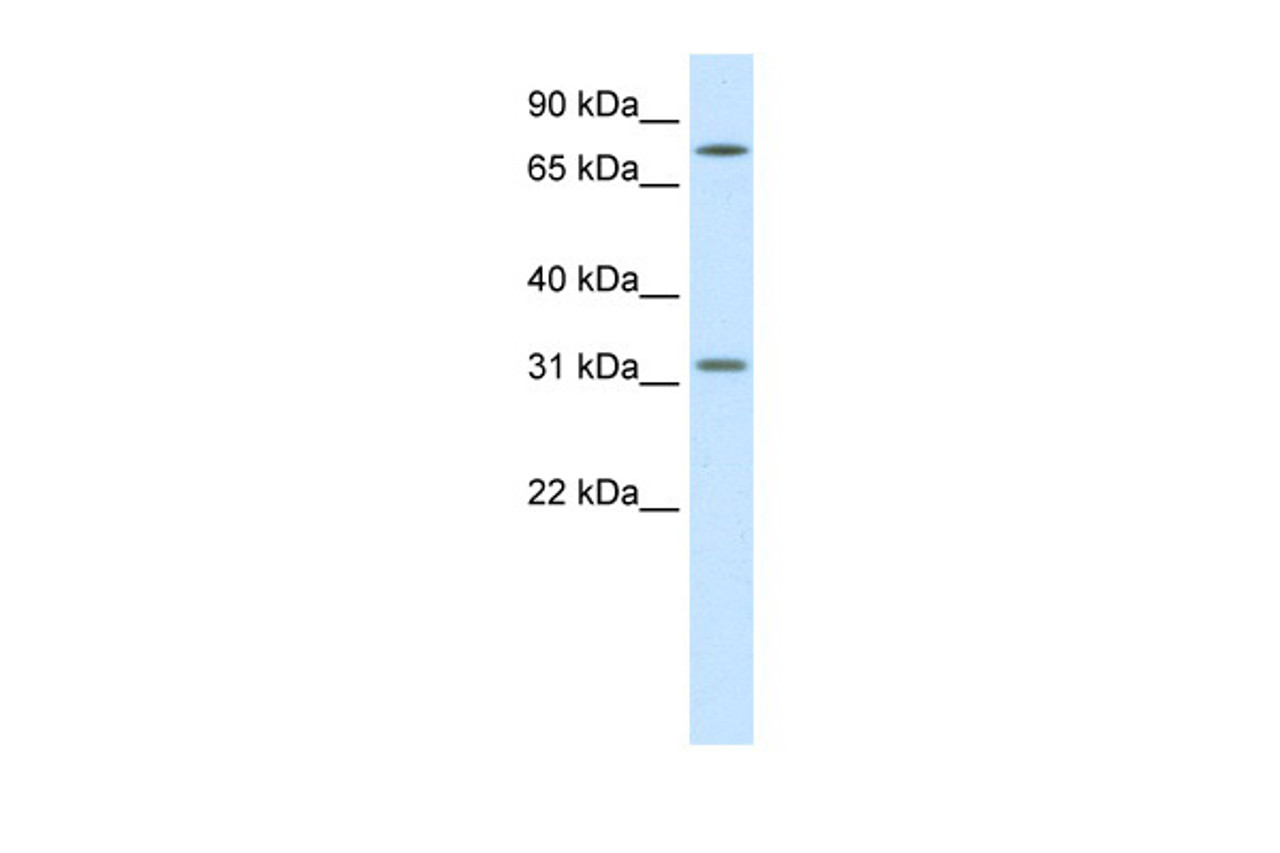Product Description
WNT8B Antibody | 27-871 | ProSci
Host: Rabbit
Reactivity: Human, Mouse, Rat, Dog
Homology: N/A
Immunogen: Antibody produced in rabbits immunized with a synthetic peptide corresponding a region of human WNT8B.
Research Area: Cancer, Signal Transduction, Neuroscience
Tested Application: E, WB
Application: WNT8B antibody can be used for detection of WNT8B by ELISA at 1:1562500. WNT8B antibody can be used for detection of WNT8B by western blot at 1.25 μg/mL, and HRP conjugated secondary antibody should be diluted 1:50, 000 - 100, 000.
Specificiy: N/A
Positive Control 1: Cat. No. XBL-10123 - Fetal Brain Tissue Lysate
Positive Control 2: N/A
Positive Control 3: N/A
Positive Control 4: N/A
Positive Control 5: N/A
Positive Control 6: N/A
Molecular Weight: 39 kDa
Validation: N/A
Isoform: N/A
Purification: Antibody is purified by protein A chromatography method.
Clonality: Polyclonal
Clone: N/A
Isotype: N/A
Conjugate: Unconjugated
Physical State: Liquid
Buffer: Purified antibody supplied in 1x PBS buffer with 0.09% (w/v) sodium azide and 2% sucrose.
Concentration: batch dependent
Storage Condition: For short periods of storage (days) store at 4˚C. For longer periods of storage, store WNT8B antibody at -20˚C. As with any antibody avoid repeat freeze-thaw cycles.
Alternate Name: WNT8B,
User Note: Optimal dilutions for each application to be determined by the researcher.
BACKGROUND: The WNT family consists of sereval secreted signaling proteins. These proteins have been implicated in oncogenesis and in several developmental processes, including regulation of cell fate and patterning during embryogenesis. WNT8B is a protein which shows 95%, 86% and 71% amino acid identity to the mouse, zebrafish and Xenopus Wnt8B proteins, respectively. The expression patterns of the human and mouse genes appear identical and are restricted to the developing brain. The chromosomal location of this gene to 10q24 suggests it as a candidate gene for partial epilepsy.The WNT gene family consists of structurally related genes which encode secreted signaling proteins. These proteins have been implicated in oncogenesis and in several developmental processes, including regulation of cell fate and patterning during embryogenesis. This gene is a member of the WNT gene family. It encodes a protein which shows 95%, 86% and 71% amino acid identity to the mouse, zebrafish and Xenopus Wnt8B proteins, respectively. The expression patterns of the human and mouse genes appear identical and are restricted to the developing brain. The chromosomal location of this gene to 10q24 suggests it as a candidate gene for partial epilepsy.
 Euro
Euro
 USD
USD
 British Pound
British Pound
 NULL
NULL










